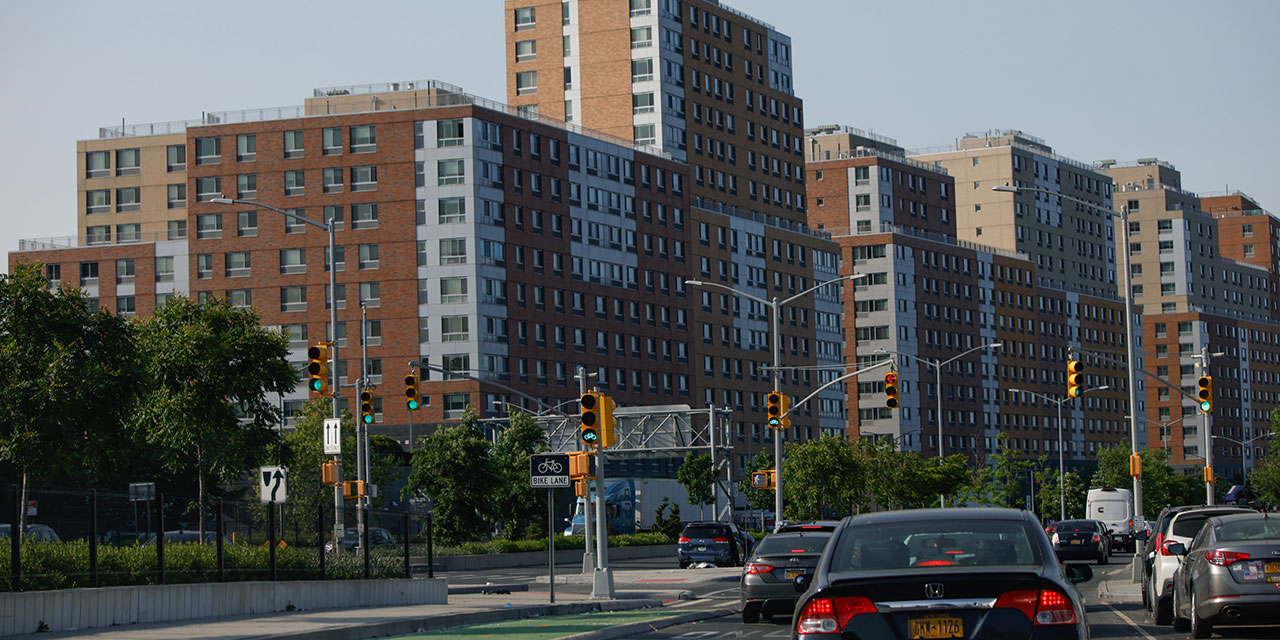
A straightforward description of New York City’s affordable-housing lottery system sounds like one of Ronald Reagan’s Soviet jokes. The program, which distributes below-market housing to randomly selected New Yorkers, received almost 6 million applications last year for just 10,000 available units—a process so unlikely to yield an apartment that it seems more like a Powerball drawing than a real policy.
While New York’s bureaucracy administers the housing Hunger Games, Dallas’s skyline is dotted with cranes. Amid a surge in jobs and residents, Dallas has kept rents affordable and quietly cemented its status as a premier destination for ambitious Americans. The contrast could not be starker—or more instructive. With greater Dallas on track to surpass the tristate area in economic might by the turn of the century, it’s up to Gotham to deregulate its housing market if it wants to remain the nation’s leading city.
Finally, a reason to check your email.
Sign up for our free newsletter today.
New York’s affordable-housing lottery is overseen by the Department of Housing Preservation and Development and is one among numerous dubious initiatives to combat Gotham’s cost-of-living crisis. Most of the lottery’s “affordable” units require that applicants earn incomes well above those of the working class. Only the most lucky and persistent applicants ever win, and while their prize often includes a luxury tower with commendable amenities, rents—which start at $2,490—still consume a large chunk of their paychecks.
The lottery is a symptom of Gotham’s failure to build new housing. The city’s zoning laws, environmental reviews, and endless layers of bureaucracy have made new construction difficult. Developers must navigate a maze of restrictions, community board approvals, and political horse-trading just to break ground. The city, which already had a chronic housing shortage, effectively rations the remaining units to the ultra-wealthy or ultra-lucky.
By contrast, Greater Dallas, including neighboring Fort Worth, is booming. The region’s pro-growth and pro-housing policies have it on track to be “the only U.S. metropolitan area to house two cities with populations over 1 million in the next five years.”
New York apologists will claim that Gotham, with its density and history, could never replicate Dallas’s model. New York’s obstacle, however, is not geography but political will. States and cities with the most restrictive zoning and land-use rules also have the highest housing prices, while those that embrace deregulation see greater affordability and economic growth. New York City’s leaders would rather be powerful in a broken system than incidental in an effective one.
Embracing lessons from cities like Dallas is essential if New York wants to remain America’s economic engine. For Gotham, that means abolishing exclusionary zoning, slashing permitting timelines, and letting the market do what it does best: build.
Radical deregulation is not a panacea, but it is the only path to restoring affordability and opportunity in New York’s housing market. Without it, the city risks becoming a museum—a collection of neat galleries, manicured universities, compelling theaters, and world-class restaurants, preserved for the wealthy but abandoned by the ambitious.
Wealthy New Yorkers who consider that vision appealing should note the fate of world-leading cities that abandon dynamism. Take Vienna. Tourists can visit the Austrian capital to see Freud’s bust, hear Mozart at the Opera House, and enjoy the world’s best strudel. But the city merely reruns the hits of a century past, while larger, faster-growing European cities provide the continent with innovations in ideas, music, art, and food.
Dallas is striving to supplant New York, and it’s attracting the kinds of companies, families, and innovators who once flocked to Gotham. Between 2021 and 2022, the Dallas–Fort Worth region added more residents than any other U.S. metro, along with 265 relocated or expanded businesses. While Dallas’s residential population grew 5.7 percent from 2020 to 2023, New York’s fell by 2.5 percent. One analysis predicts that Dallas–Fort Worth will “eclipse New York City as the biggest metro area by the year 2100.”
Gotham has always prided itself on being a city where anyone with grit and determination can succeed. But that promise is fading, as the housing lottery illustrates. It’s time to stop gambling with the city’s future and start preparing New York for another world-leading century.
Photo by Kena Betancur/VIEWpress
City Journal is a publication of the Manhattan Institute for Policy Research (MI), a leading free-market think tank. Are you interested in supporting the magazine? As a 501(c)(3) nonprofit, donations in support of MI and City Journal are fully tax-deductible as provided by law (EIN #13-2912529).
Source link


















